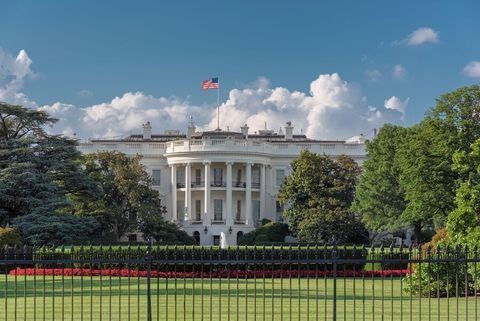The EU Foreign Subsidies Regulation One Year On: An Effective Tool or Just More Red Tape?
What You Need to Know
Key takeaway #1
In the first year of application of the FSR, the European Commission received more notifications than expected and has already opened two own-initiative investigations. However, it carried out few in-depth (Phase II) investigations and adopted only one decision (a conditional clearance).
Key takeaway #2
The FSR’s reporting rules cast a wide net, catching many large, but otherwise innocuous M&A transactions and public bids. Notifications are burdensome and can cause significant delays for the unprepared.
Key takeaway #3
As all but one of the in-depth investigations, and both the own-initiative investigations, involved Chinese companies, the FSR may increase trade tensions between the EU and China.
Client Alert | 11 min read | 12.03.24
Just over a year ago, the notification obligations under the EU Foreign Subsidies Regulation (FSR) became applicable. Since then, M&A transactions and bids for government contracts above certain thresholds must be notified to the European Commission. Pending the Commission’s review, the transaction cannot be completed, or the contract cannot be awarded. What lessons can be learned from the application of the FSR to date? Has the FSR proved to be an effective tool in leveling the playing field, or has its main effect been to burden companies with red tape, at the risk of discouraging investment in Europe?
Hundreds of notifications, few in-depth investigations, only one decision
As a reminder, the FSR added three new tools to the Commission’s regulatory toolbox: two notification-based tools for high-value mergers and acquisitions (M&A) and public bids, and an ex-officio investigation tool (see our previous alert). We will first discuss the experience to date with the notification-based tools and then turn to the first investigations started on the Commission’s own initiative.
The notification obligations came into effect on October 12, 2023. Since then, it has become clear that the actual number of notifications exceeds initial estimates, particularly as far as public bids are concerned. By the end of October 2024, the Commission had received over 120 notifications of M&A transactions (including prenotifications), and over 1,300 notifications or declarations regarding public bids (including about 140 full notifications). However, the Commission opened only four in-depth (so-called Phase II) investigations, one regarding an M&A transaction and three regarding public bids. Only the investigation into the M&A transaction led to a decision – so far, the only decision under the FSR.
The three in-depth investigations regarding public bids all concerned Chinese companies:
- In February 2024, the Commission initiated a Phase II investigation into the participation by CRRC, a Chinese state-owned train manufacturer, in a tender by the Bulgarian Transport Ministry for the provision of electric push-pull trains and related maintenance and training services. Apparently, the initial notification from CRRC did not include all the relevant foreign financial contributions (FFCs). Additionally, the bid price submitted by CRRC was significantly lower than the contracting authority’s cost estimate and considerably below the offer from the only other competitor. The Commission provisionally concluded that CRRC had received foreign subsidies, enabling it to submit an abnormally low bid. Before the Commission could conclude its investigation, CRRC withdrew its bid, leaving Spanish manufacturer Talgo as the only remaining bidder, with a proposal that was twice as expensive. The Bulgarian Transport Ministry then decided to cancel the procedure and launch a new call for tenders. It does not take much imagination to see how instances such as this could give rise to political tensions between national governments and the Commission.
- In April 2024, the Commission initiated two in-depth investigations into the participation of two bidding consortia led by Chinese companies (respectively, LONGi Solar Technology and Shanghai Electric) in a public procurement procedure for the design, construction and operation of a solar energy park in Romania. In this case too, the consortia withdrew their bids before a decision could be adopted.
To date, the Commission has only opened one in-depth investigation under the notification-based tool for M&A transactions. On June 10, 2024, the Commission initiated a Phase II review of the partial acquisition of PPF, a telecoms company active in several Central and Eastern European countries, by e& (formerly Etisalat), a telecoms group based in the United Arab Emirates (UAE).
The investigation revealed that e& had directly and indirectly received foreign subsidies in the form of an unlimited State guarantee and loans from UAE-controlled banks with preferential conditions. It is worth noting that the Commission initially expressed concern that these subsidies could have negative implications for both the acquisition process (by allowing e& to deter or outbid other interested parties), and post-transaction (by distorting competition in the markets concerned). However, the Commission ultimately based its decision only on the second concern. To address the Commission’s concerns, e& offered commitments, including the removal of the unlimited State guarantee, an obligation not to finance PPF’s activities in the EU, and a requirement for e& to inform the Commission of any future acquisitions not otherwise notifiable under the FSR. The Commission accepted these commitments and appointed a monitoring trustee to oversee them. The commitments are valid for 10 years, with the option to extend them for another five years.
The decision is notable not only for being the first and, so far, only formal decision under the FSR, but also because the Commission typically avoids imposing behavioral remedies in merger cases, favoring structural remedies (i.e., divestitures) that do not require long-term monitoring.
The first two ex-officio investigations target Chinese companies
When the FSR was first introduced, the general expectation was that the Commission would first focus on notifications and only launch own-initiative investigations once it had gained significant experience in applying the FSR. The Commission has defied these expectations by starting two ex officio investigations already in the first year:
- In April 2024, the Commission launched an investigation targeting Chinese wind turbine suppliers. The probe initially focused on wind park developments in Bulgaria, France, Greece, Romania and Spain, but was later expanded to include projects in Germany and other EU countries.
- Subsequently, still in April, the Commission conducted dawn raids at the premises of Chinese security scanner company Nuctech in the Netherlands and Poland. It seems that the Commission had received indications that the company may have received subsidies from China that allowed it to underbid competitors in calls for tender. Nuctech has filed an appeal with the General Court against the raids and has also applied for interim relief. In the interim relief proceedings, Nuctech’s objections focused on the Commission’s request for access to the contents of certain employees’ mailboxes, which are not stored on EU-based servers but on those of its parent company in China. The president of the General Court denied the request for interim relief, stating that the Commission’s request to obtain ex-EU data would not breach international law and that Nuctech had not presented sufficient evidence to show that, prima facie, complying with the Commission’s order would result in a violation of Chinese law. Nuctech has appealed this decision to the Court of Justice and a judgment is expected by the end of this year. The appeal against the raid is still pending before the General Court. The outcome of this case may have wider ramifications, as similar issues also arise in antitrust investigations conducted by the Commission.
Lack of transparency and need for guidance
With hundreds of notifications resulting in only one formal decision, which has not yet been published, the application of the FSR has largely taken place in a “black box”. No information is publicly available on the vast majority of cases dealt with by the Commission and only very limited information is available (in the form of a press release) on cases that have triggered an in-depth investigation or are being investigated ex officio.
From the beginning, there has been a Q&A on the Commission’s website, and this has been updated several times in the course of the year. This Q&A provides information that relates to jurisdictional issues, as well as to the scope and application of the reporting requirements. It also deals with procedural, implementational and practical issues. However, it does not cover substantive analysis.
In an effort to increase transparency, the Commission has recently started to publish the M&A transactions notified to it in its case register.
Furthermore, the FSR requires the Commission to issue guidance by January 2026 on substantive issues, including the application of the criteria for determining the existence of a distortion and the application of the balancing test. On July 26, 2024, the Commission published a staff working paper providing some “initial clarifications” on the notions of distortion and balancing. The Commission notes that, for a distortion to exist, a link must be established between the company’s activities in the EU and the foreign subsidies received. The Commission emphasizes that it is sufficient that the subsidy is liable to have negative effects on competition, i.e., it is not necessary to demonstrate actual effects.
Regarding the balancing test, the Commission indicates that the subsidies identified as most likely to be distortive (under Article 5 of the FSR – see our previous alert), are “less likely” to see their negative effects outweighed by positive effects. In any event, the application of the balancing test cannot result in a less favorable outcome for the companies under investigation than if the test had not been applied. If the positive effects outweigh the negative effects, the Commission may adopt a “no objection” decision. However, if the negative effects outweigh the positive effects, but the latter are still significant, the balancing test may lead the Commission to adjust the nature and scope of the remedies, while ensuring that the remedies fully and effectively address the negative effects.
The response from Beijing
On the face of it, the FSR does not target any particular third country, but rather sets forth generally applicable, non-discriminatory rules. However, as we have seen, almost all of the in-depth investigations to date have targeted Chinese companies, most of which were subsidiaries of Chinese state-owned enterprises (SOEs). This is not so surprising, since China is not a market economy and is known for its massive state support of its industries.
The question now is how Beijing will respond to these actions. The FSR came into force against a backdrop of deteriorating trade relations between the EU and China, and reflects a general increase in the scrutiny of Chinese subsidies. In 2023, the EU initiated more than twice as many new trade defense cases as in 2022, largely targeting Chinese imports, including an ex officio anti-subsidy investigation into battery electric vehicles (BEVs). China has retaliated in the traditional area of trade defense, launching anti-dumping and anti-subsidy investigations against European spirits and dairy products.
China has now also taken the first steps towards denouncing the FSR as a violation of international trade rules: on July 10, 2024, China’s Ministry of Commerce (MOFCOM) announced that it had launched an investigation into “relevant practices adopted by the EU in its investigation of Chinese enterprises under the Foreign Subsidies Regulation”, after receiving a complaint from the China Chamber of Commerce for Import and Export of Machinery and Electronic Products (CCCME).
This investigation is being conducted under national laws on foreign trade barriers. Under Chinese law, such a trade barrier is characterized by a violation of an economic treaty or agreement between the PRC and the relevant third party (in this case, the EU), or by an “unfavorable influence” by that party on Chinese products. In particular, “unfavorable influence” exists where the EU (i) hinders or restricts the access of Chinese products or services to the EU market, or (ii) impairs the competitiveness of Chinese products or services in the EU market.
If it is confirmed that the Commission’s activities under the FSR constitute a barrier to trade under Chinese law (and this is the most likely outcome), Chinese law requires MOFCOM to take appropriate action. This may involve bilateral consultations, as it did in the case of China’s tariffs on BEVs, but it may also involve the initiation of a multilateral dispute settlement mechanism. In other words, in the second year of application of the FSR, China may raise claims of inconsistency with WTO agreements, and in particular the WTO Agreement on Subsidies and Countervailing Measures.
Conclusion: Casting a wide net to catch few fish
Experience to date suggests that the FSR is of most concern to companies from China or other countries with state-dominated economies, including companies controlled by sovereign wealth funds from the MENA region, when doing business in the EU.
However, M&A transactions and public bids by such companies are likely to represent only a tiny fraction of all notifications to the Commission. Companies from the United States, the United Kingdom, and other “friendly” market economies are likely to account for most notifications. It is also worth noting that even EU companies may be required to file a notification if they operate globally and thus receive significant FFCs from third countries.
Admittedly, the value-based thresholds are high both for M&A transactions (the target must have an EU turnover of at least € 500 million) and public procurements (estimated contract value of at least € 250 million). However, these thresholds are combined with FFC-based thresholds that are comparatively low, so that if the first threshold is met, the second will in most cases be met as well.
By basing its notification thresholds on the broad concept of “foreign financial contribution” rather than on the narrower concept of “foreign subsidy”, the FSR deliberately casts a very wide net. The FFC concept covers the transfer of funds or liabilities (including not only subsidies in the traditional sense but also loans, capital injections, debt relief, etc.), the foregoing of revenues otherwise due (such as tax breaks), and the provision or purchase of goods and services to/from the government or government-controlled entities. For example, the acquisition of securities in a company by a government-owned investment fund, or the purchase of electricity from a government-owned utility are considered FFCs. The relevant ground to be covered in connection with the reporting requirements under the FSR is therefore vast, and gathering all this information is a daunting task for any company with international operations.
Companies that anticipate involvement in a transaction or public tender that meets the value-based thresholds are therefore advised to begin gathering the relevant FFC information in advance. Experience has shown that this information gathering process is time consuming and cumbersome because the required information is not collected in the ordinary course of business and is therefore not readily available. As a result, failure to prepare in advance can delay deal timelines or jeopardize the chances of winning large government contracts.
The main lesson to learn from the first year of application of the reporting requirements under the FSR is that, in order not to discourage investment in the EU, there is a need to build in more filters and introduce a simplified procedure so as to avoid burdening companies that are involved in innocuous transactions with unnecessary red tape.
Contacts
Insights
Client Alert | 7 min read | 12.19.25
In Bid to Ban “Woke AI,” White House Imposes Transparency Requirements on Contractors
In July 2025, President Trump signed Executive Order (EO) 14319, Preventing Woke AI in the Federal Government, to preclude the federal government from procuring artificial intelligence (AI) models that incorporate “ideological biases or social agendas,” including “diversity, equity, and inclusion.” The EO mandates that the federal government purchase only large language models (LLMs) developed according to two “Unbiased AI Principles” — that they be “truth-seeking” and show “ideological neutrality.” To implement these principles, the EO directed the Office of Management and Budget (OMB) to issue guidance.
Client Alert | 19 min read | 12.18.25
2025 GAO Bid Protest Annual Report: Where Have All the Protests Gone?
Client Alert | 7 min read | 12.17.25
Client Alert | 1 min read | 12.17.25







